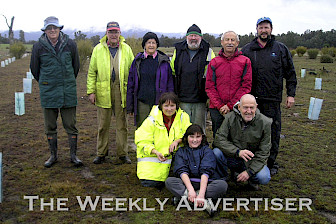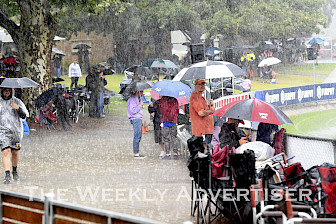He said the untapped food-manufacturing market was a ‘hidden opportunity’ and it was crucial to seek investment opportunities to provide a major boost for the region’s socio-economic profile.
“Agriculture is our largest economic output in the Wimmera-southern Mallee. It makes up about $1-billion in gross domestic product for the region,” he said.
“What most people won’t know is for what we produce, we only add value to about one percent of that product.”
Regional Development Australia is researching where opportunities might exist for the Wimmera-Mallee to add manufacturing value to agriculture products.
Mr Benjamin said farmers and producers had historically exported their produce from the farm gate to other regional centres or major cities to add value.
“What ends up happening is not only are we giving up that opportunity to add that value in our own community, but also from an environmental perspective – we are shipping a lot of product that doesn’t need to be shipped,” he said.
“There’s usually about 50 percent of by-product that comes out of any manufacturing process – often that is then shipped back to the region, because it goes into a feedstock process or is used as fertiliser.”
Mr Benjamin said Wimmera-Mallee producers’ ability to grow canola meant there were immediate investment opportunities to process the oilseed in the region.
“You have a bulk-processing requirement for canola, where the first requires the plant to be crushed. Why aren’t we doing that locally?” he said.
He added that the region could be growing durum wheat to meet growing market demand.
“The biggest buyer of durum wheat, San Remo, has made no secret of its desire to grow its purchase of durum from 170,000 tonnes to 300,000 over the next couple of years,” he said.
“The region could not only benefit from transitioning to grow the product, but what we’d like to see is if the initial processing of the durum plant could occur in the region to extract that value locally.”
Prime example
Mr Benjamin said the opening of Horsham processing company Australian Plant Proteins was a prime example of value-added agriculture.
The company converts pulses into a highly sought-after multi-use food additive. Company leaders plan to double the facility’s output within a year following a $45.7-million investment from international agri-food giant Bunge.
“What we’ve seen in the past couple of weeks with further investment into the pulse-protein plant is that food manufacturing is a very attractive sector at the moment worth a large amount of capital,” Mr Benjamin said.
“You need a lot of employees to process at that level and considering one of the biggest goals is to increase our population we believe this is a great way of achieving that.”
Mr Benjamin said a bioenergy project unfolding in Ararat provided another example of value-adding in the region’s agriculture sector.
“Ararat is talking about taking a waste product, something that farmers would normally burn off – and actually creating a value-added product in this case energy,” he said.
The entire April 28, 2021 edition of The Weekly Advertiser and AgLife is available online. READ IT HERE!






